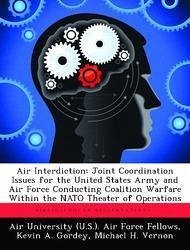This study examines whether current joint US Army and Air Force doctrine adequately supports the coordination of air interdiction (AI) efforts, at the operational level, within NATO in Central Europe. The considerations for and the procedures used in the employment of air interdiction missions by US and NATO forces are examined. The systems are compared and significant procedural differences are highlighted. Finally, implications for current and future operations are considered. The focus of the investigation is the procedures as outlined in the Joint Attack of the Second Echelon (J-SAK) and in NATO MAS ATP-27(B) and 33(A). Issues at the operational level of war are examined, and considerations for employment within the AirLand battle framework are presented. The study concludes that the framework of joint and combined doctrine supports coordination of interdiction efforts at the operational level. However, refinement is needed in both the US and NATO systems to insure an effective meshing of planning and coordination. Specific areas that require attention are the definitions of air missions, particularly battlefield air interdiction (BAI) as a subset of AI or offensive air support (OAS); the establishment of joint planning procedures in the US battlefield coordination element (BCE); the adoption of a reconnaissance and interdiction planning line (RIPL) by US forces; and the increased use of mission orders by US and NATO forces.








